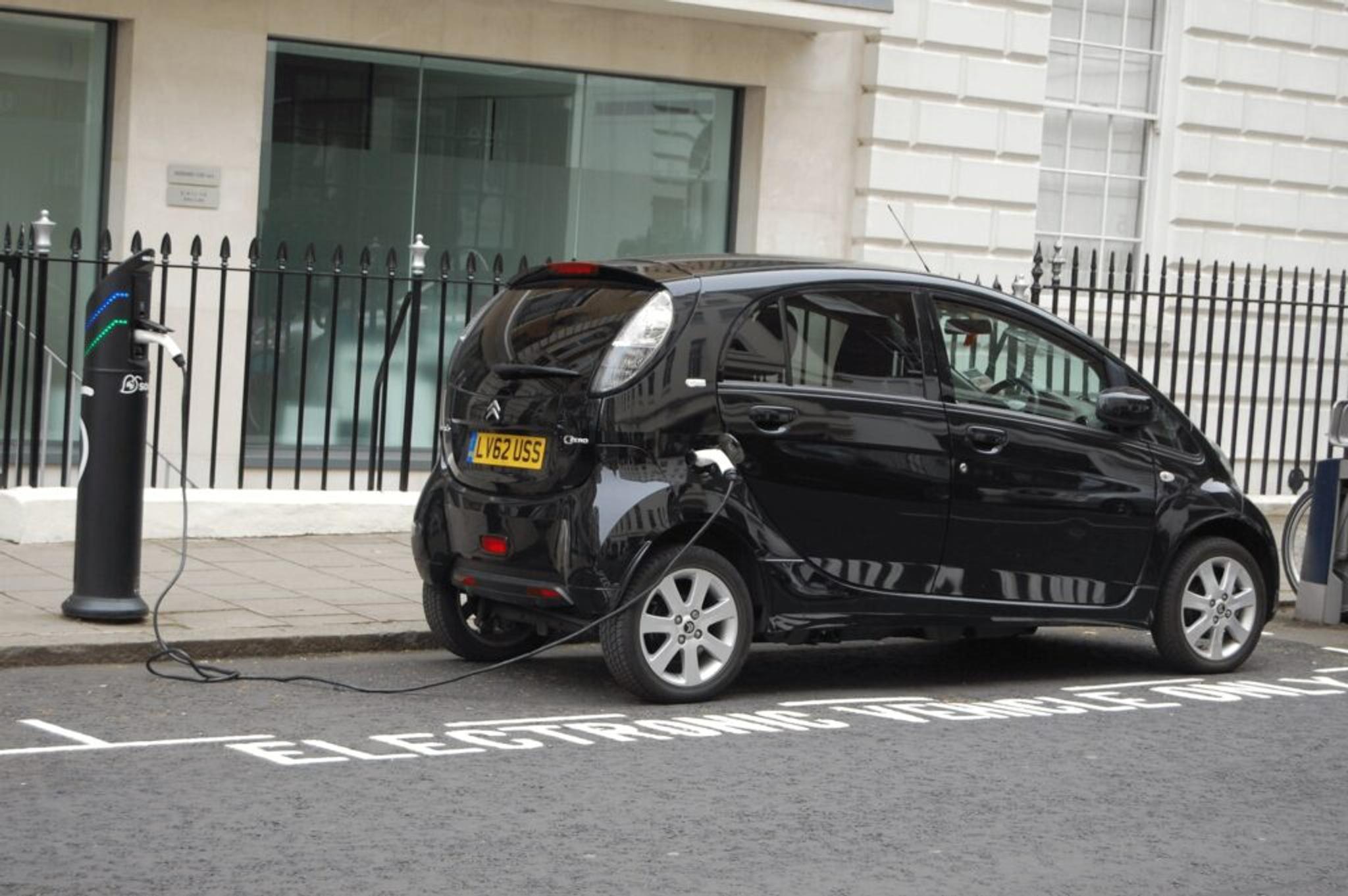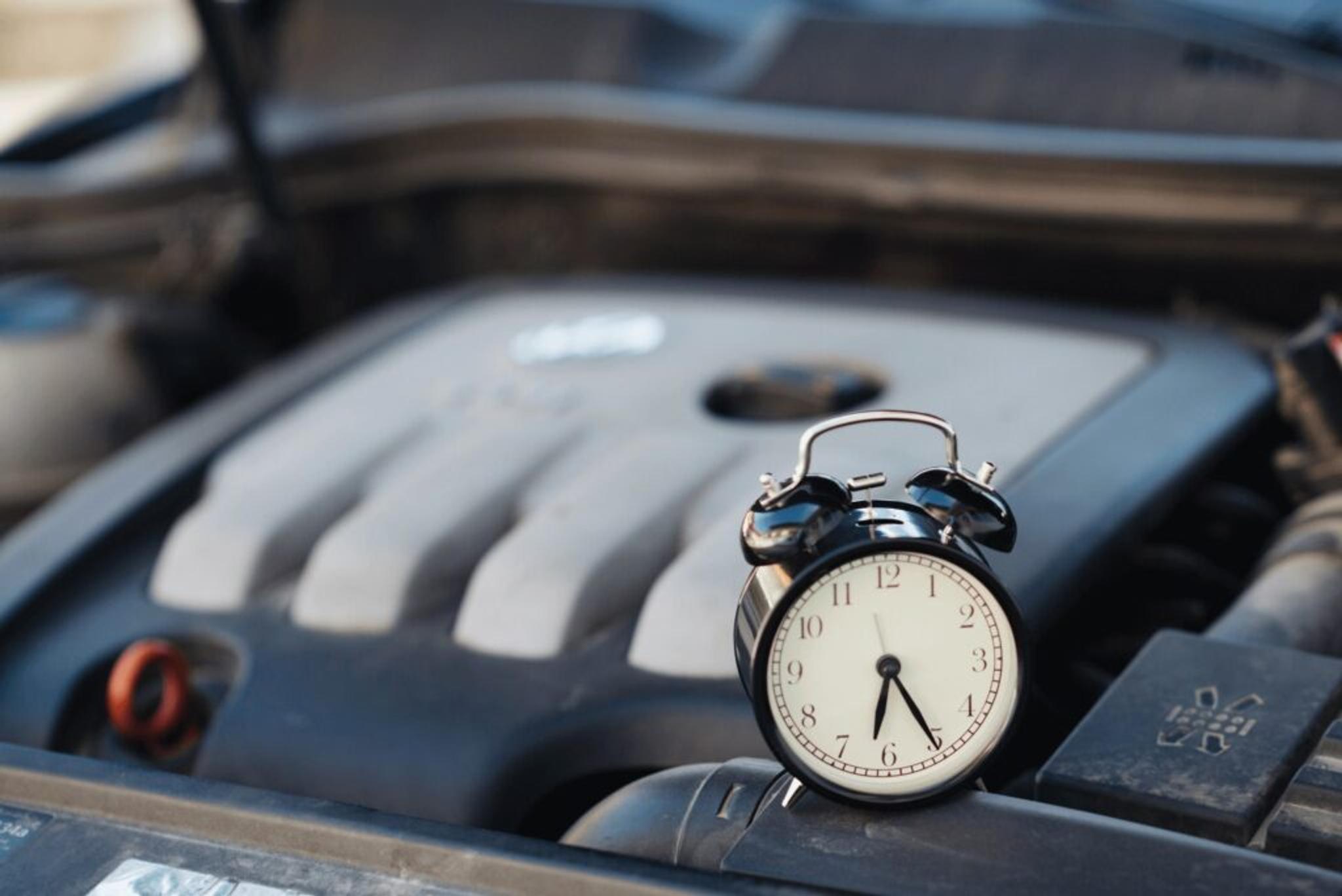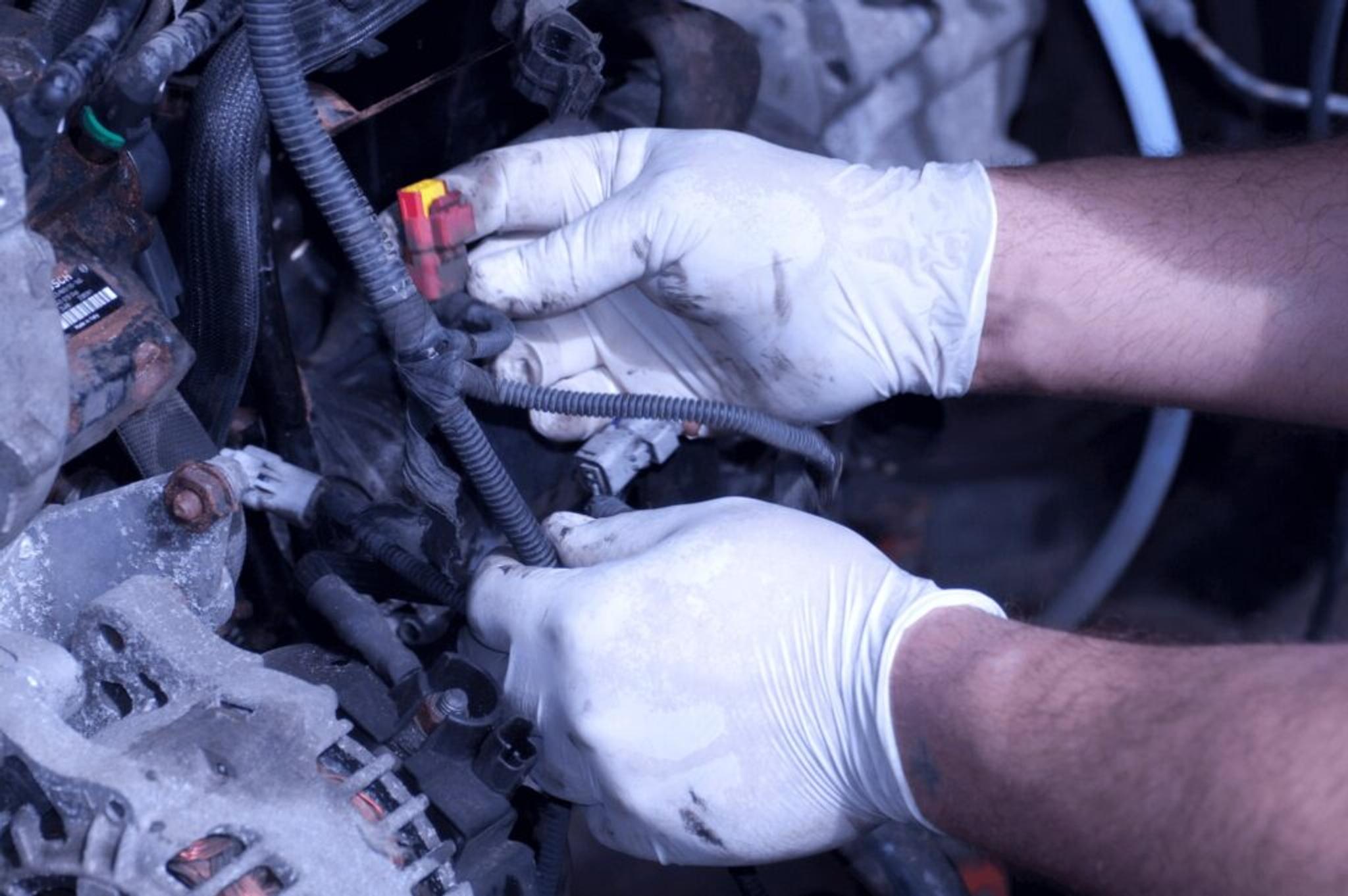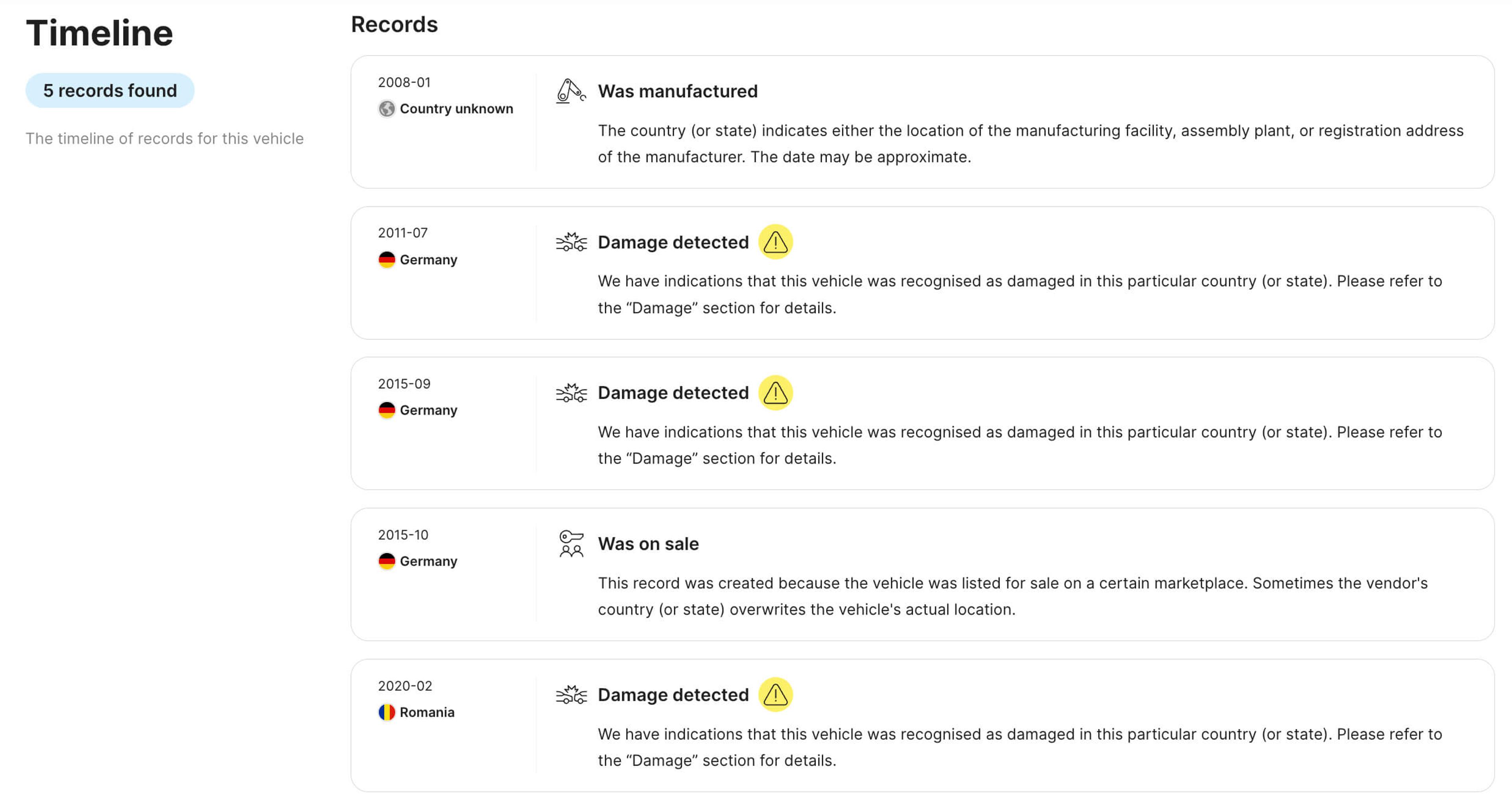02/07/2023
Car maintenance guide: things you need to know

If you want your car to work properly and avoid problems, it’s important to perform regular maintenance. Planned checkups will not only make your vehicle last longer but will also help keep its value.
We’ve prepared a list of essential car maintenance tips, so you know what kind of care your vehicle needs and when.

Looks can be deceiving!
Don't risk your safety - check it with carVertical first
Scheduled car maintenance is important for your health and safety
While a car’s maintenance requires time and money, it benefits your safety. Driving a vehicle with worn tires, brakes, and other components can put your life at risk. Cars are prone to various issues, and if you don’t schedule maintenance on time, your vehicle can break down in the middle of the road.
The owner’s manual is the primary source of information on everything you need to know about a car's maintenance. If you don't have the owner’s manual, you can easily find it online – manufacturers always upload them on their websites. The owner’s manual will also provide you with a car maintenance schedule, so you can plan your visits to the workshop.
If you’re wondering how long car maintenance takes, there’s no single answer. On average, it can take 3 to 5 hours to go through a checklist and ensure that everything’s working properly. However, if any issues occur, it can take much longer.
What is the expected cost of car maintenance?
The car maintenance cost will vary depending on the vehicle’s make, model, and year of manufacture. According to various studies, the expected annual cost for car maintenance can be anything from $800 to $2,000.
The maintenance of a small hatchback will be much cheaper than for a luxurious SUV. Even seemingly-trivial tasks like changing your tires will cost significantly more for trucks and other big vehicles than for sedans or wagons.
Your regular maintenance routine is based on distance traveled
The amount of money you’ll have to dedicate to your car’s maintenance depends on what is the average miles driven per year. If you drive 10,000 miles (16,000 km) per year, you’ll spend less on maintenance than someone who exceeds 50,000 miles (80,000 km).
People covering more miles will not only have to change the oil, tires, various fluids, and filters more often – they will also spend money on repairs, driving the maintenance costs up significantly.
When it comes to maintenance, weather and road conditions are important factors. The cold negatively affects vehicles, which means drivers in Northern countries like Norway or Canada spend more on maintenance than their Southern companions. Similarly, living in a city puts a lot of stress on your transmission and brakes, adding to your car maintenance costs.
Maintenance required light vs. check engine light
If the maintenance required light comes on, there’s no need to panic. This light only informs you that it’s time for regular maintenance, such as changing the motor oil or spark plugs. Usually, manufacturers program cars to remind drivers about maintenance every 5,000 miles (8,000 km) automatically. However, if your vehicle’s oil level is low or you have other problems, this light may come up sooner.
The check engine light alarms the driver that something’s wrong with their car, and your attention is required. Usually, the check engine light has an error code, which you can check in the user’s manual and learn about the problem.
However, if you have any doubts, it’s better to bring your car to a workshop, as the check engine light can signify many things, such as issues with a catalytic converter, faulty fuel injectors, or even a loose gas cap (if you’re lucky).
Help your car operate at its maximum efficiency
Paying attention to what your car wants to tell you, followed by regular maintenance, will prolong your vehicle’s life. Many drivers ignore maintenance and warning lights on the dashboard until one day, their car breaks, resulting in costly repairs.
While the maintenance of diesel and gasoline cars is similar, hybrid and electric vehicles have peculiarities that few know. Here are 5 essential electric car maintenance tips.
Electric vehicle maintenance checklist

Battery performance check
The battery is the most important part of an electric car – take care of it over everything else. The average battery lasts around 200,000 miles (320,000 km), so you’ll probably have to replace it after hitting this mark. Most manufacturers warranty batteries for 8 years or 100,000 miles (160.000 km).
Before buying a used EV, consider how many miles a car has already driven, as replacing a battery can cost at least several thousand dollars. If you want your battery to last longer, don’t drain it until it's dead. However, don’t overcharge it either, as this negatively affects its health.
Apart from a lithium-ion battery, EVs also have a 12V battery. It lasts around 3 years, so be sure to check it when buying a second-hand vehicle. Finally, try to check your battery’s connections every 6 months and clean them.
Battery cooling system
The batteries of electric vehicles need to be cooled to keep their performance at peak level. Check the level of your EV’s cooling liquid, otherwise, your battery can overheat.
Brakes
Since EVs use regenerative braking, their brakes can last twice as long as diesel or petrol vehicles. However, it also depends on your driving style, terrain, and even the weather. If you feel that your brakes aren’t working properly, bring your car to a workshop.
Don’t forget the brake fluid – you have to change it every 2-5 years, depending on the EV you drive.
Software
Software updates are an important step in electric car maintenance. In that sense, EVs are no different from smartphones, computers, or IoT devices. Make sure that your software is set to update automatically, enabling you to get updates even when driving. Otherwise, you can check for updates manually and install them when convenient.
Skipping updates might mean losing access to certain functionalities or features.
Oil and fluid change
While electric vehicles don’t use motor oil, they still need brake fluid, transmission oil, and coolant. Check their levels and refill if needed.
How often should you change your oil?

A general rule of thumb is changing your car’s oil every 7,000-10,000 miles (11,000-16,000 km). Changing the oil on time improves your engine’s durability and performance. It lubricates the moving parts in your engine and prevents wear and tear. If you don't change the oil, your engine will eventually overheat, and dirt will start to build up inside, which will damage parts and diminish power.
How do you know if you need your oil changed?
Most modern vehicles will alert you when it’s time to have your oil changed, so you don’t need to worry about missing this procedure. However, if you’re driving an older car, you’ll have to plan oil changes yourself.
How often you should change your oil depends on various factors, such as the climate, driving conditions, and driving habits. If you live in a mountainous area, where temperatures vary greatly, this puts a lot of stress on your vehicle’s engine and will shorten your oil change intervals. Living in a city with traffic jams or occasionally towing a trailer will also put stress on your car, and the motor oil will lose its qualities quicker.
How much does an oil change cost?
An oil change price is between $50 and $150 on average. This price will vary in different countries. Even 2 workshops located in the same city can have different price ranges, so compare the prices in advance.
Your vehicle’s model and year also play an important role in the final price of an oil change. SUVs and trucks require more oil than compact cars, so expect your oil change to cost more.
During an oil change, you should also replace your oil and air filters. Don’t worry – any workshop will recommend doing this.
Car fluids and common leaks

You have to take car fluids and leaks seriously, as their improper management can cause serious and costly problems. Fortunately, identifying them isn't very complicated.
How to determine what's leaking based on the fluid color
Light brown or black (with a rainbow-like effect) – engine oil
When your engine oil is leaking, you’ll see a light brown or black puddle under your engine. You may also see an iridescent, rainbow-like effect in the puddle of oil.
This leak may be caused by a worn engine gasket, seals, or valve cover gaskets. It's not uncommon for an oil pan drain plug to be loose, which can also be the reason why your car is leaking.
While it’s normal that vehicle parts degrade over time, an oil leak can also be caused by a car accident. If you’re buying a used vehicle, always look under it and see that there’s no puddle. Use a dipstick to determine if the oil level is sufficient.
While many drivers ignore small oil leaks and continue to use their car, it’s not a good strategy, as over time, your vehicle will start leaking even more.
Red – transmission fluid
Red fluid under your car might mean that your transmission is leaking. Usually, this is caused by a worn or damaged transmission pan, broken seals, or a crack in the torque pump.
Green, orange, blue, red, or pink – coolant
Coolant can come in various bright colors to make it easier to distinguish from other car fluids. It’s used to regulate the temperature in your engine – in short, don’t wait to fix any coolant leak.
Start inspecting your cooling system by examining the hoses connected to your radiator. Sometimes, a leak can be caused by a loose clamp, so tightening it may solve the problem. However, if you have leaks in your radiator or heater, you'll have to take your vehicle to a professional.
It’s important to use the coolant fluid recommended by your manufacturer, as different coolant types have different qualities and are suited for different car models.
Transparent – water or fuel
A clear fluid leaking from your car probably is water or fuel. If water is dripping when using an AC, it's probably condensation from the cooling system, while fuel creates a colorful rainbow-like effect on water and has a distinctive smell.
Yellow or brown – brake fluid
Brake fluid is yellow, but it changes color to brown as it ages. If you notice leaks under your car next to your wheels – something may be wrong with your brake system. A brake fluid leak can also cause your brake pedal to feel soft, as air enters the brake system.
A leak can be caused by damaged brake hoses, a worn master cylinder or caliper pistons, a faulty ABS module, pump, or other brake system components. Since brakes are the most crucial part of a vehicle, address this problem immediately.
Light yellow, red, or brown – power steering fluid
As with other parts in a car, a leak in the power steering system can occur due to a number of reasons, such as worn hoses, seals, or o-rings. While you can still drive your vehicle with leaking power steering fluid, it’s better not to wait too long and schedule a workshop visit.
Tire maintenance: everything you need to know

Tires can last from 50,000 miles to 100,000 miles (80,000-160,000 km) on average. However, this depends on your driving style, climate, and terrain.
A general rule of thumb is checking your tire pressure every month. Be sure to do that when your tires are cold, as the pressure in your tires will increase after a longer ride. Improperly inflated tires will wear quicker, so it’s best to take good care of them.
How often should you rotate your tires?
Manufacturers advise rotating your tires every 5,000-10,000 miles (8,000-16,000 km), as they wear unevenly. If you drive a front-wheel-drive car, the front tires absorb more power during braking, and wear quicker than the back tires. By rotating your tires, you assure they will wear evenly, increasing their lifespan.
Adopting a tire rotation routine also improves fuel economy, provides better traction, and benefits your safety – worn tires can blow out.
Should you change all tires at once? It’s recommended to replace all 4 tires, so they wear evenly. If only one tire is replaced, its traction will be different, which can unbalance your vehicle.
Replacing one tire is fine when it’s of the same model and condition as the rest.
The difference between regular and winter tires
If you’re living in a country where snow, ice, and freezing temperatures are common, you need to change your summer tires to winter ones. Winter tires have deeper treads, providing better traction in icy conditions, and more rubber, so they don't harden under low temperatures.
Summer tires, on the other hand, start to harden in winter, leading to a worse grip. You shouldn’t use winter tires in summer, as they’ll wear quicker and affect fuel economy.
All-season tires stand in the middle and can be used in both winter and summer. However, this only applies to regions with mild winters. These tires aren’t safe for daily driving if you live somewhere with freezing temperatures and lots of snow. In that case, get yourself a set of proper winter tires.
Brake system maintenance

Drivers shouldn’t wait until the performance of their brake system starts to degrade – it’s best to check your brakes regularly to avoid unexpected issues. Here’s how your brake system maintenance schedule should look like.
- Every 10,000-20,000 miles (16,000-32,000 km) – check your brake pads and make sure the brake fluid level is sufficient.
- Every 20,000-30,000 miles (32,000-48,000 km) – change the brake fluid.
- Every 50,000-70,000 miles (80,000-112,000 km) – replace the brake rotors.
These numbers also depend on your driving style and road conditions. If you live in a city with heavy traffic, you’ll use your brakes more than someone who lives on the outskirts.
How do you know if you need a brake job?
You can identify a faulty brake system by paying attention to what your vehicle is trying to tell you. Here are signs that you need a brake job as soon as possible.
- Vibrations in the brake pedal
- Squeaking or grinding noises
- Leaking brake fluid
- It takes longer to stop your car
- Vibrating steering wheel when braking
- Thin brake pads
Simple DIY car maintenance tips

Wiper blades
Wiper blades remove water, snow, and dirt to increase visibility. However, they degrade over time, and you need to change them. Squeaking sounds and bad cleaning quality are the most obvious signs of worn wiper blades.
How to change windshield wiper blades: most models don’t require additional tools or special knowledge. Just remove the old wiper blades and secure the new ones.
Air filters
There are 2 air filters in a car: an engine filter and a cabin filter. Changing your air filter on time prolongs your engine’s life and improves fuel economy. You can find the engine air filter under the hood: it’s located in a plastic box at the top or side of the engine. Simply open the box and replace the old filter with the new one.
The cabin filter is usually located behind the glove compartment or under the windshield. If necessary, remove the glove box, remove the old filter and replace it. This task won’t take you more than a minute, but it will save you the money you would otherwise pay a mechanic.
Tire pressure
How to check your tire pressure: check your tire pressure when your tires are still cold. For example, in the morning, after your car has been parked for at least a few hours. Tire pressure always increases after driving, so you won’t get accurate results.
You can get a tire pressure gauge to check your tire pressure at home and then inflate it at the gas station. Check your car’s user manual to learn how much you need to inflate your tires.
Oil level
Checking your engine oil level from time to time is vital to ensure that your engine runs smoothly. Open your car’s hood and take out the dipstick. Perform this task when the engine is cold, otherwise, the results may not be accurate. If the oil level is below the recommended mark, refill it.
Prevent potential problems by knowing your vehicle’s history
Second-hand cars can hide many secrets, as you can never be sure if their mileage is legitimate and what kind of damages they’ve suffered in the past. By checking a vehicle’s history on carVertical, you can learn how your car was treated in the past.

A history report may reveal recorded photos, theft records, recalls, mileage rollbacks, damages, ownership changes, and more. By knowing this information, you can not only plan a car’s maintenance but also take a closer look at it if the report suggests the vehicle’s been damaged. All you need to do is enter a car’s VIN number, and you’ll get a history report right away.

Check your VIN
Avoid costly problems by checking a vehicle's history. Get a report instantly!
